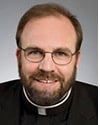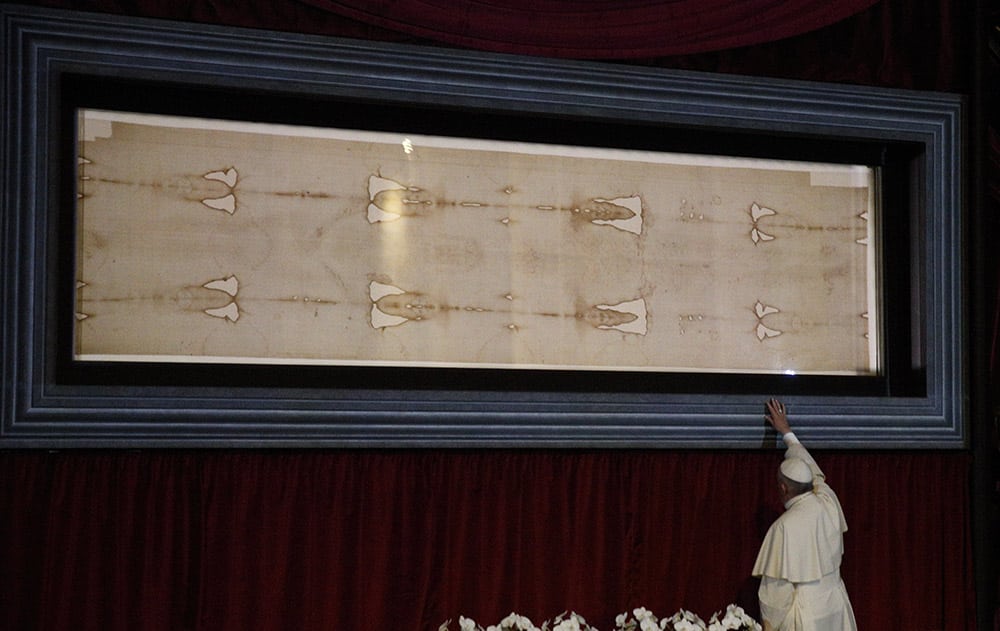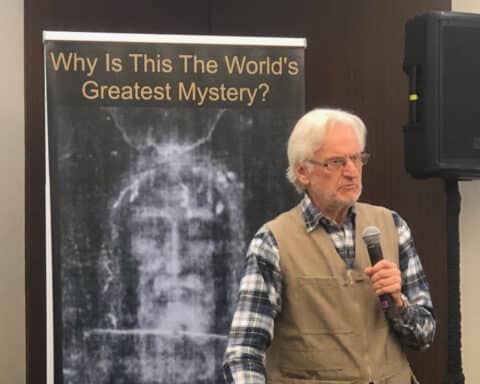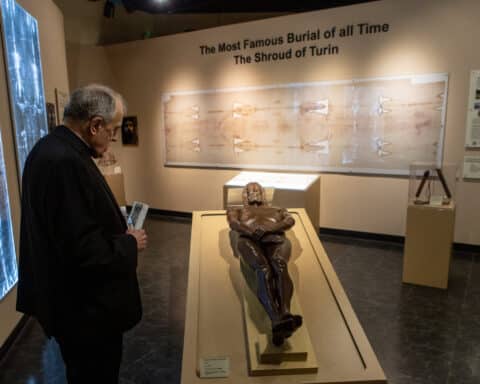
— John F., Encino, California
Answer: The Church permits the faithful to come to their own conclusions on the shroud. The faithful are permitted to venerate the shroud, study its details and view it when it is displayed. However, the shroud is not part of the deposit of faith in which Catholics must give full assent of the mind and will. Our faith in the Resurrection does not depend on the authenticity of the shroud but on the testimony of the apostles.
However, the Shroud of Turin remains an amazing and mysterious artifact. How the image was made on the cloth, its 3D effect and photo negative image, long before the invention of photography, it’s faithful depiction of the details of crucifixion, the pollen samples from the holy land and, frankly, how this cloth has survived so long are all tantalizing indicators of something truly amazing and even miraculous. Carbon dating methods have yielded differing opinions as to its age, but there are complicating factors such as a fire that scorched the shroud in 1532. In the end, the shroud is of endless fascination and presents the scientific community with a puzzle as to its origins and features.
Proper genuflection
Question: During consecration at Mass, the priest genuflects after each elevation of the body and blood. At this time, I have seen some priests genuflect on the right knee and some on the left knee. Is either knee optional, or is one or the other recommended, and why?
— Joe Curiale, Sugar Land, Texas
Answer: To genuflect on the right knee is the correct way. In the Middle Ages the tradition developed that genuflection on the left knee was used to pay honor to kings, queens, emperors and prelates. However the right knee is reserved for God alone and is a sign of divine worship. For this reason, the General Instruction of the Roman Missal says, “a genuflection, made by bending the right knee to the ground, signifies adoration, and therefore it is reserved for the Most Blessed Sacrament, as well as for the Holy Cross from the solemn adoration during the liturgical celebration on Good Friday until the beginning of the Easter Vigil” (No. 274). Hence it is most proper to genuflect on the right knee.
That being said, we do well to be careful in judging the clergy, or others, too quickly in this matter, as I am sure you are. Priests are human and, in some cases, especially as they age, a full genuflection on the right knee may become difficult. Arthritis and inflammatory conditions may make genuflecting on one or the other knee painful or impractical. If your priest is using his left knee, there may be a reason related to age or injury. Some priests are incapable of genuflecting at all and must substitute a deep bow. It is also possible that a priest does not know the tradition stated above. It is often the case in times like these that many traditions and understandings of traditions have been dropped or are never taught. It is highly unlikely that he means any offense.
Reconsecration
Question: A priest committed indecent sexual acts on an altar, and the archbishop removed it. Why couldn’t the altar be reconsecrated? That would save lots of money.
— Name withheld, via email
Answer: Let’s first step back and look at the bigger picture. If a murder or some other very scandalous or indecent act occurs in a church, it must be reconsecrated. This is also true when Catholic cemeteries are desecrated. In cases like this, it would be too much to tear a whole church down or move an entire cemetery. So, reconsecrating a deserted place is deemed sufficient.
However, if an altar or some other sacred furnishing or vessel is desecrated, it is deemed more appropriate and practical to remove and replace the desecrated thing. In the First Book of Maccabees, the stones of the altar in the Temple that had been desecrated by false worship were removed and placed in a hidden place until a prophet should arise to determine their ultimate disposition (cf. 4:36-61). It seems this was the proper decision for an altar that was desecrated. Based on this biblical teaching, the altar stones should be removed and a new altar installed. Current Church tradition indicates that such stones should be pulverized and returned to the earth, or at least in some similar way set aside until they can be returned to God.
Msgr. Charles Pope is the pastor of Holy Comforter-St. Cyprian in Washington, D.C., and writes for the Archdiocese of Washington, D.C. at blog.adw.org. Send questions to msgrpope@osv.com.





